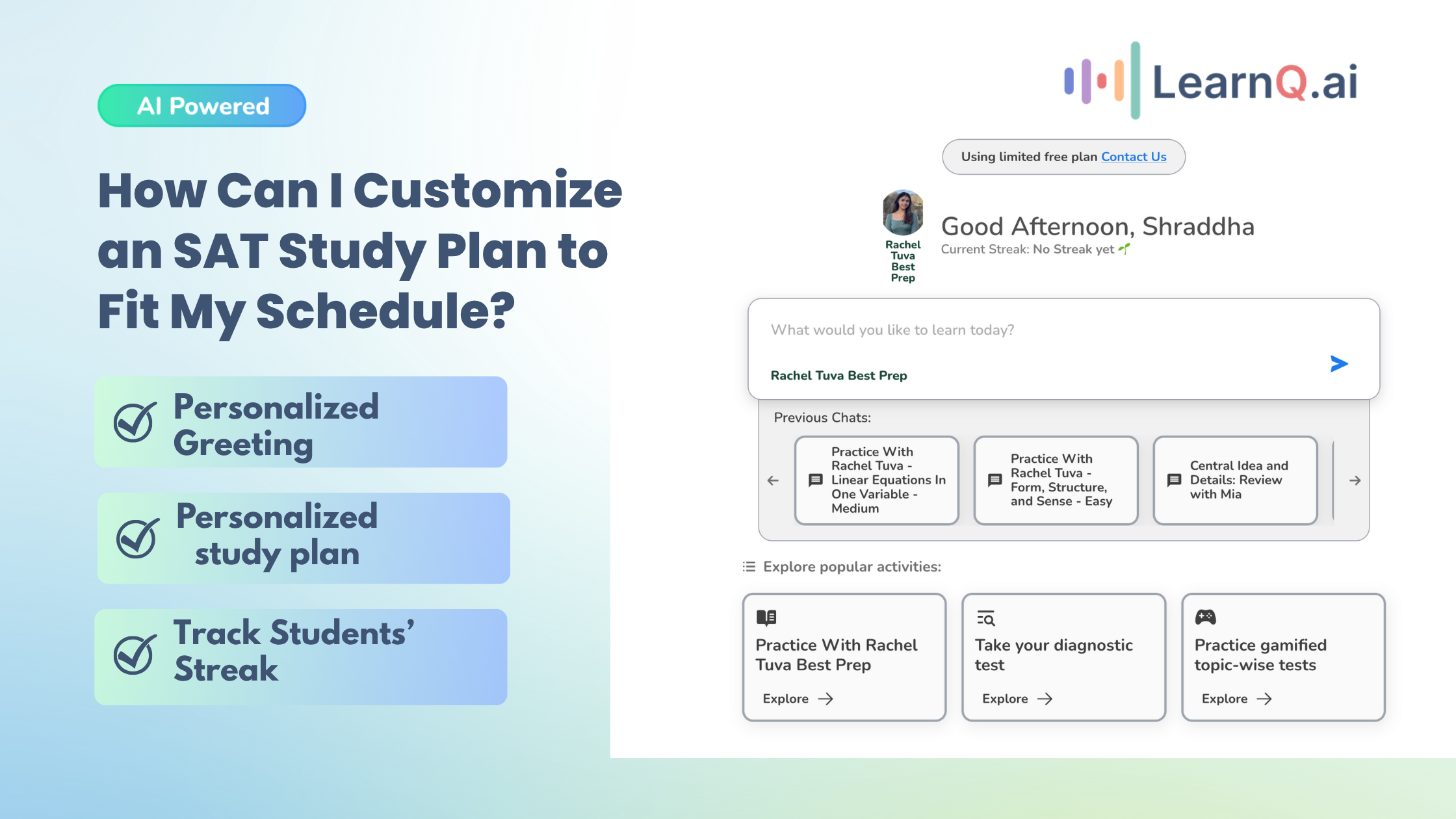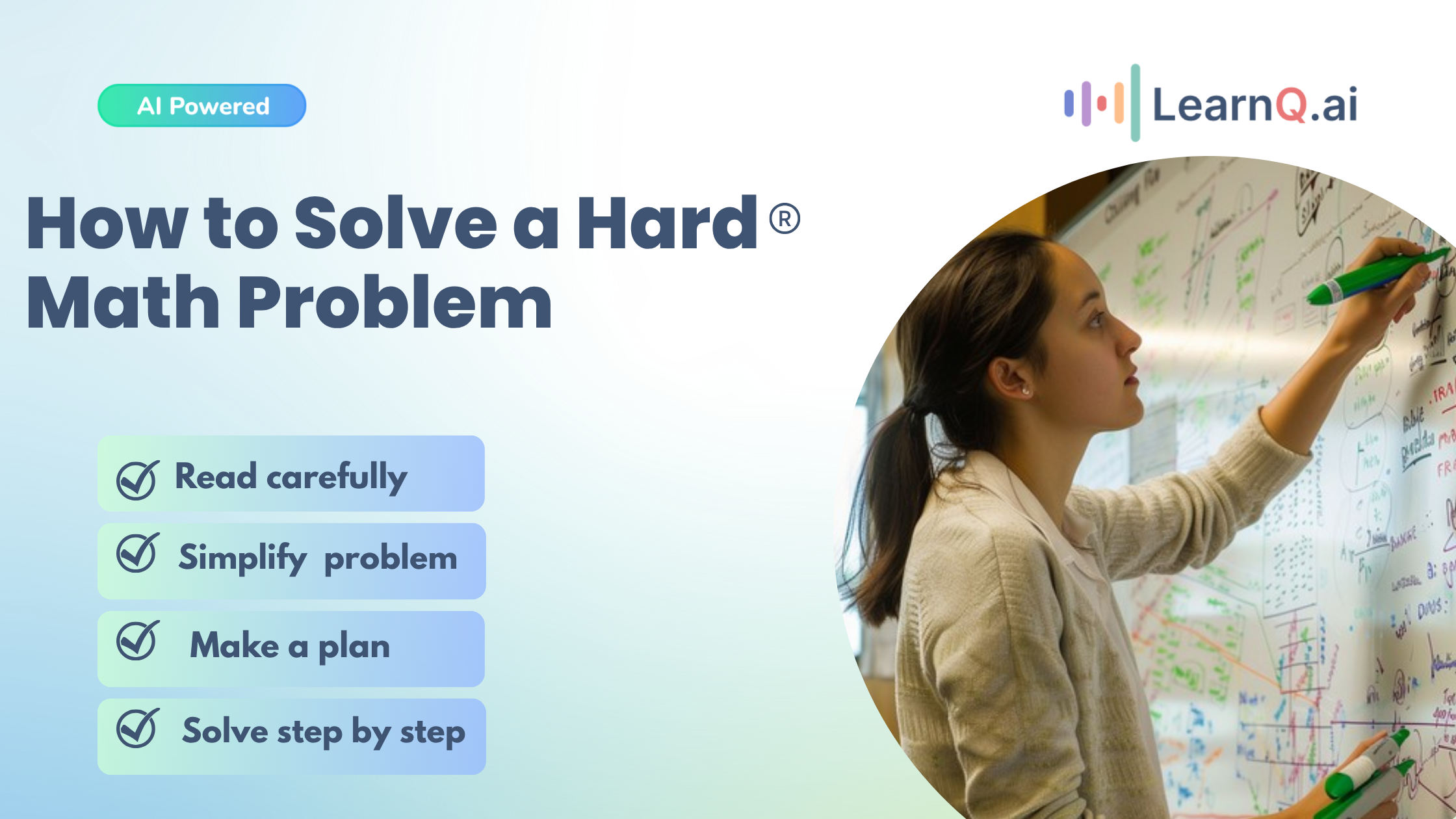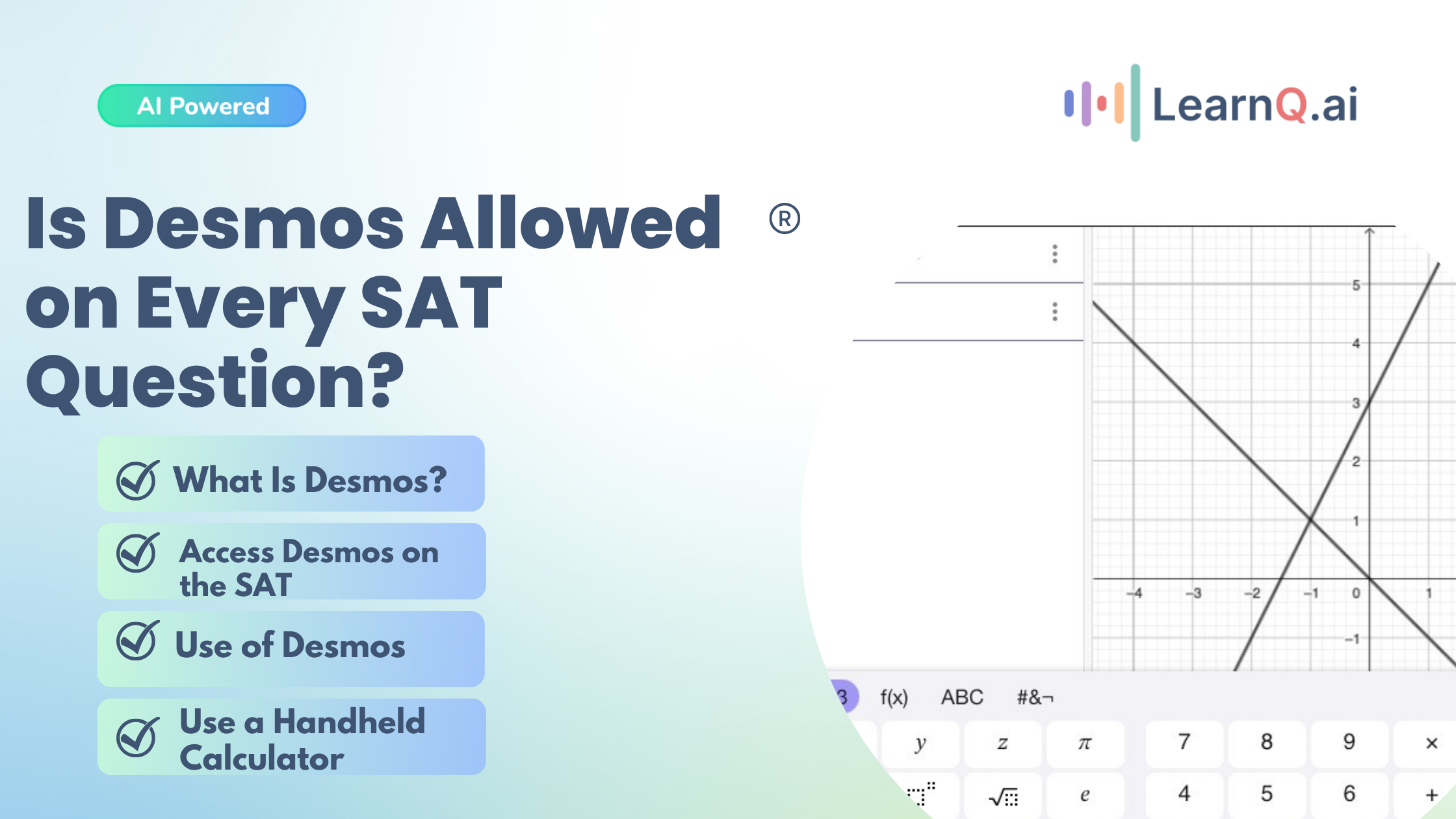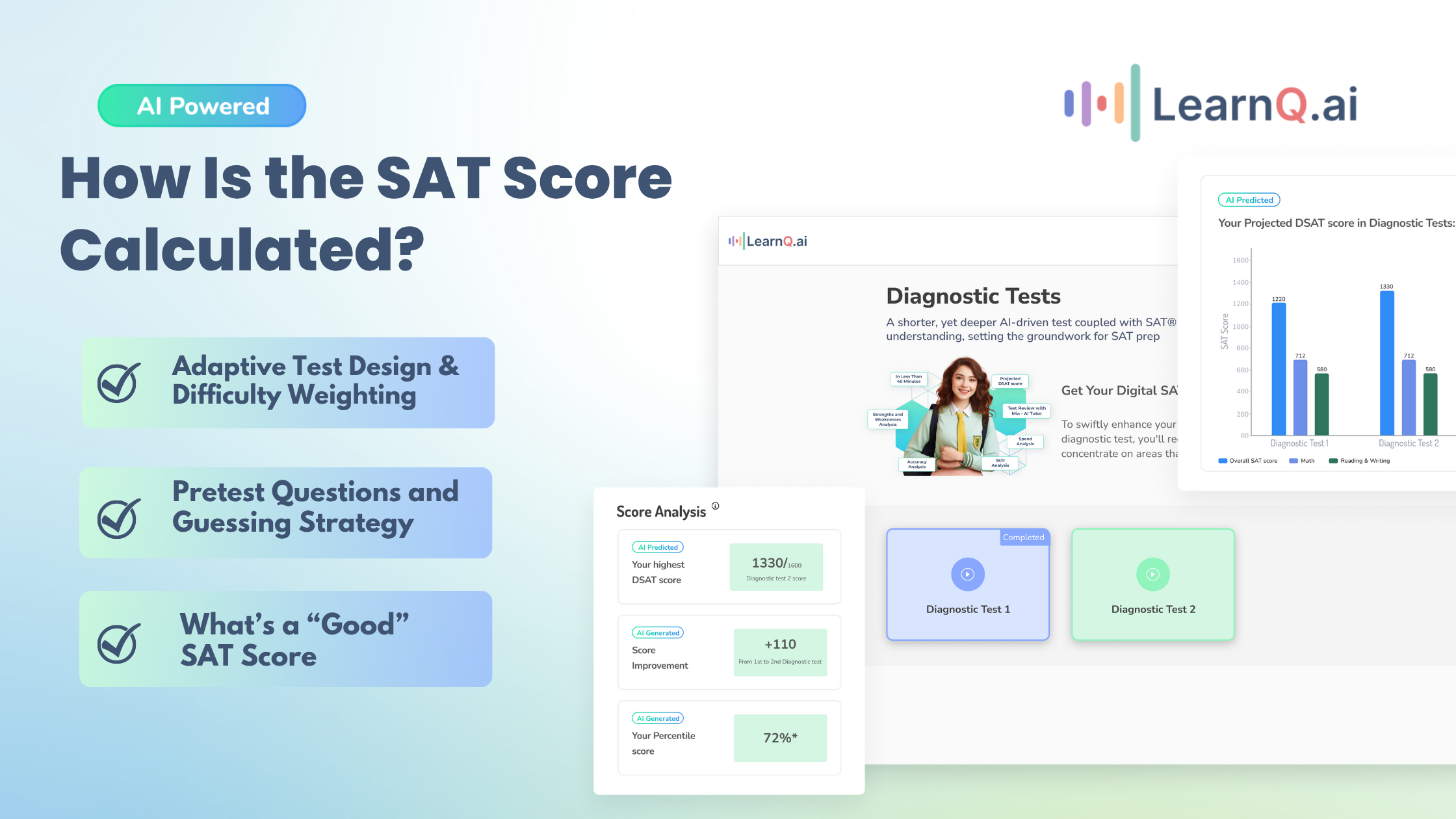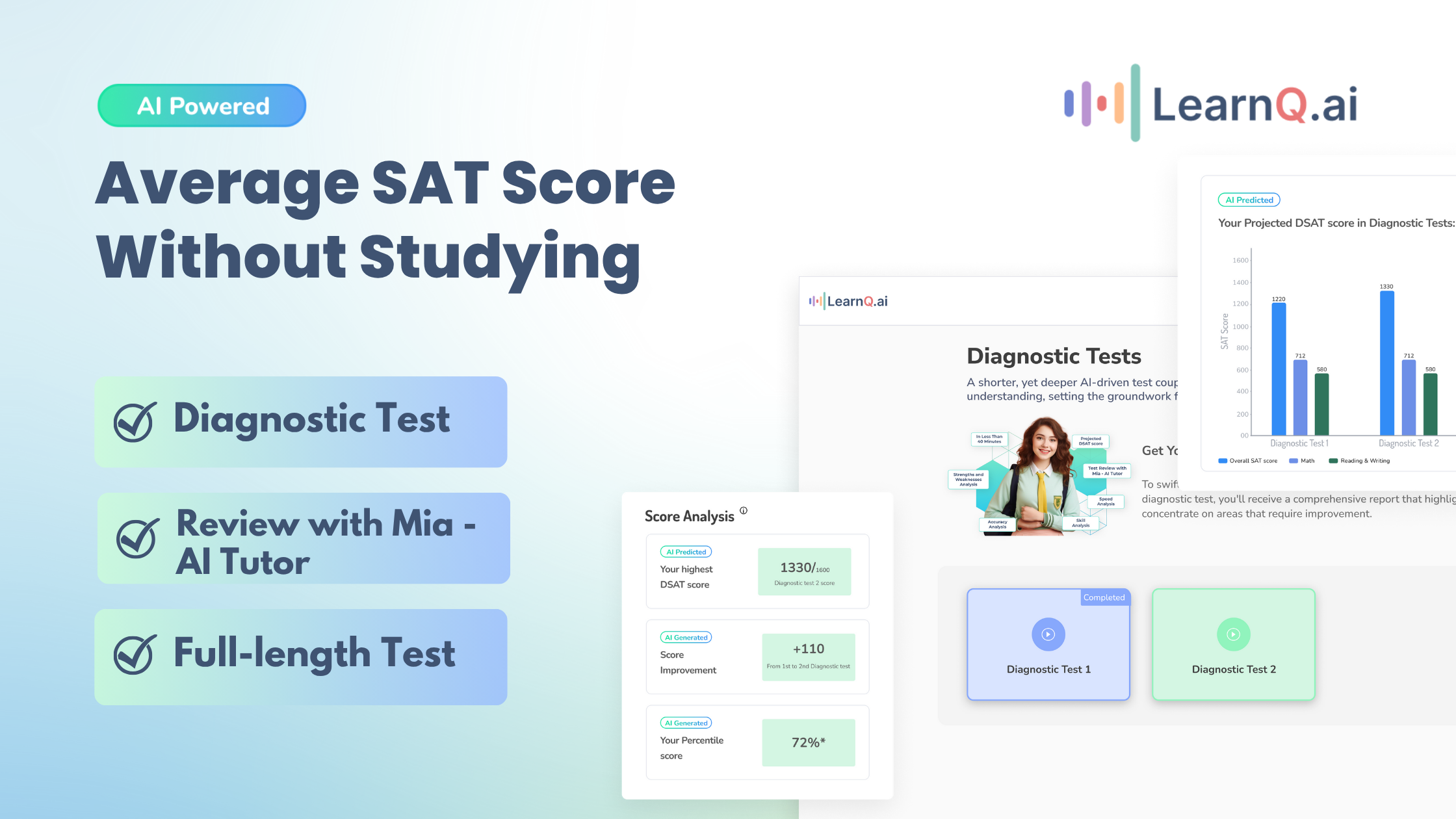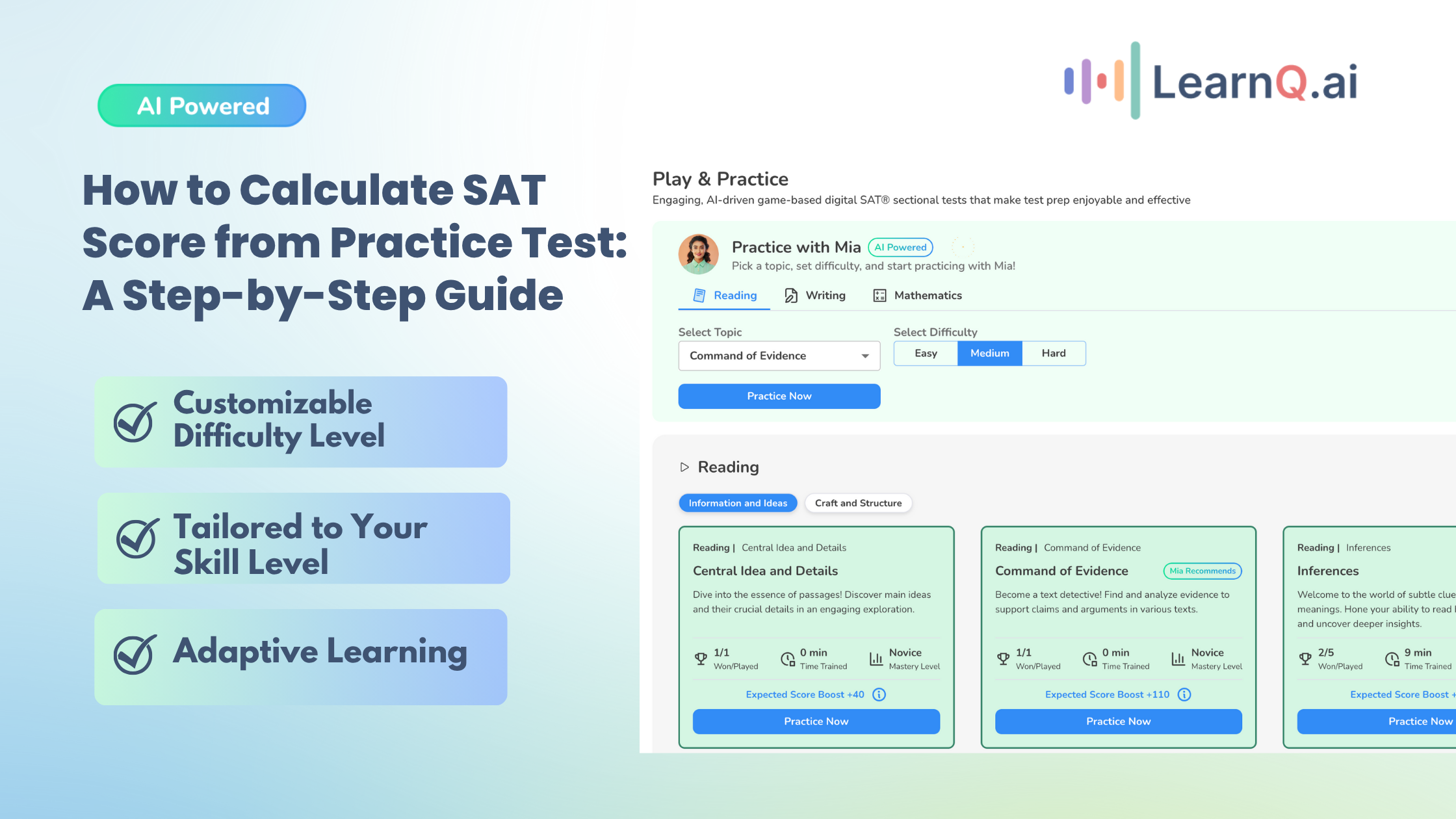Does the notion of taking the SAT math section make your stomach turn? You may be anxious about such a big test even if you receive all As in class! After all, taking the SAT differs from simply knowing the material.
We’ll provide you with the best SAT math tips and tricks today to help you relax. These pointers will assist you in mastering the Maths part, from improved guessing techniques to time management.
Importance of Mastering SAT Math to Improve College Admissions Prospects
Mastering the SAT Math section is a critical step for students aiming to enhance their college admissions prospects. The importance of this component in the overall SAT score cannot be overstated, as it plays a pivotal role in the college application process. Below are some key points that highlight the significance of excelling in SAT Math:
- A Reflection of Mathematical Abilities: Achieving a high score in SAT Math demonstrates a student’s proficiency in mathematical concepts and problem-solving skills.
- A Critical Factor in College Admissions: Many colleges and universities emphasize SAT scores, with the Math section being a vital component of the evaluation process.
- A Competitive Edge: Excelling in SAT Math can set a student apart from other applicants, increasing their chances of admission to their desired institutions.
- A Gateway to Opportunities: A strong performance in the Math section can lead to scholarships and other academic opportunities, further enhancing a student’s college prospects.
Now, let us briefly examine the Math section, including all the tools and reference formulas.
Overview of SAT Math Section
Even though it may seem apparent, be sure you understand the material covered in the SAT math section. It will be difficult to do well if you don’t know what is on the test, let alone if you haven’t rehearsed.
For the Digital SAT Prep, you need to be aware of:
| Content Area | Percentage of Section | Number of Questions | Topics Covered |
| Algebra | Around 35% | 13–14 questions | Linear equations in one variableLinear equations in two variablesLinear functionsSystems of two linear equations in two variables Linear inequalities in one or two variables |
| Advanced Math | Around 35% | 13–15 questions | Equivalent expressionsNonlinear equations in one variable and systems of equations in two variablesNonlinear functions (such as quadratic, polynomial, exponential, absolute value, rational, radical, etc.) |
| Problem-solving and Data Analysis | Around 15% | 5–7 questions | Ratios, rates, proportional relationships, and unitsPercentagesOne-variable data: distributions and measures of center and spreadTwo-variable data: models and scatter plotsProbability and conditional probabilityInference from sample statistics and margin of error. Evaluating statistical claims: observational studies and experiments |
| Geometry and Trigonometry | Around 15% | 5–7 questions | Area and volume. Lines, angles, and triangles Right triangles and trigonometryCircles |
This is a much shorter list of skills than it looks. Since we’ve all been working with expressions since elementary school, most kids undoubtedly constantly practice many of these skills in class.
You can determine and address the abilities or subjects you need to acquire by being aware of what will be on the test. You will need to study triangles, circles, and other related topics on your own if you have never attended a geometry class.
Enhance your Digital SAT study routine with AI-driven insights and personalized practice tests.
Tools and Formula Sheet Given
In the Digital SAT, you are provided with a range of tools to assist you during the Math section. These tools are designed to enhance your test-taking experience and support you in solving mathematical problems efficiently. Here are some of the tools available to you in the Digital SAT for the Math section:
- On-Screen Calculator: You are allowed to use an on-screen calculator for the calculator-allowed portion of the Math section. This eliminates the need for a physical calculator and ensures that all students have access to a standardized tool.
- Reference Sheet: A reference sheet containing commonly used formulas and mathematical constants is provided on-screen. This allows you to quickly access important information without memorizing all the formulas.
- Highlighting Tool: You can highlight important information or numbers in the questions to help you focus on key details and avoid errors.
- Answer Elimination: This feature allows you to eliminate answer choices that you believe are incorrect, helping you narrow down your options and make more informed guesses.
- Navigation Buttons: You can easily navigate between questions, review your answers, and flag questions for later review using on-screen navigation buttons.
- Zoom In/Out: If you require larger text or want to focus on specific parts of a question, the zoom in/out feature provides flexibility in adjusting the display size.
- Scratchpad: A digital scratchpad is available for you to jot down calculations or notes as you work through the questions.
These digital tools are designed to make your test-taking experience more user-friendly and accessible, allowing you to focus on demonstrating your mathematical skills.
LearnQ.ai is Powered by VEGA AI—Is your Institute Next?
Give students a Duolingo-style test-prep platform with Shopify-level customization for tutors and institutes.
Preparation Strategies
A well-structured preparation strategy is key to conquering the SAT Math section. Here are some effective approaches to ensure you’re fully prepared for test day.
- Familiarize Yourself with Subjects Being Tested
Begin your preparation by gaining a thorough understanding of the subjects tested in the SAT Math section, including algebra, geometry, trigonometry, and data analysis. Reviewing these topics will provide a solid foundation for tackling various question types. If you want to read more about mathematical formulas, read this blog!
- Importance of Memorizing Common Formulas
Although the SAT provides a reference sheet with some formulas, memorizing common mathematical formulas can save valuable time during the test. Familiarize yourself with formulas for area, volume, the Pythagorean theorem, and other frequently used equations.
- Taking High-Quality Practice Tests from sources like LearnQ.ai
Practice tests are a crucial component of SAT preparation. Utilize LearnQ.ai’s full-length SAT practice tests, play, and practice tests to familiarize yourself with the format and question types. These tests provide the most accurate representation of the actual exam and can help identify areas for improvement.
- Working on Weaknesses and Addressing Learning Gaps
Platforms like LearnQ.ai also offer a diagnostic test that helps you analyze your results to identify weaknesses and content gaps. Focus your study efforts on these areas to ensure a well-rounded understanding of all mathematical concepts.
- Utilize Tutoring Resources for Targeted Preparation
For personalized guidance, consider utilizing tutoring resources. In this digital arena, where technological innovations have taken over all industries, the education system has not been untouched. Platforms like LearnQ.ai have developed an AI tutor- Mia to meet the dynamic needs of SAT students. Mia helps you address specific weaknesses, answer your questions, and refine your test-taking strategies.
Key Tips for Testing Day
Approaching the SAT Math section with the right mindset and strategies can significantly enhance your performance. Here are some key math SAT tips to keep in mind on testing day.
- Read Questions Carefully to Avoid Misinterpretation
Take the time to read each question thoroughly to ensure you understand what is being asked. Misinterpretation can lead to incorrect answers, so pay close attention to the wording and details of each question.
- Efficient and Judicious Use of Calculator
While the calculator can be a valuable tool, use it wisely. Rely on mental math for simpler calculations to save time, and reserve the calculator for more complex computations. Ensure you’re familiar with the latest Desmos calculator’s functions before the test.
- Managing Your Time Effectively Across Sections
Time management is crucial in the SAT Math section. Allocate your time wisely, spending more time on challenging questions and less on those you find easier. Keep an eye on the in-built timer, and you can also use the review tool. Try to leave a few minutes at the end for review.
- Technique of Elimination for Multiple-Choice Questions
For multiple-choice questions, use the process of elimination to narrow down your options. Even if you’re unsure of the answer, eliminating incorrect choices can increase your chances of guessing correctly.
- Strategy of Guessing Intelligently When Uncertain
When you’re uncertain about an answer, make an educated guess. There’s no penalty for wrong answers on the SAT, so it’s better to guess than to leave a question blank. Use any information you have to make your guess as informed as possible.

Psychological and Mental Preparation
Preparing for the SAT Math section isn’t just about mastering mathematical concepts; it’s also about being mentally and psychologically ready for the challenge. Here are some tips to help you stay focused and confident.
Maintaining a Calm Mindset
- Practice relaxation techniques such as deep breathing or visualization to reduce anxiety.
- Remind yourself that it’s normal to feel nervous and that you’ve prepared well for this moment.
- Stay positive and focus on the questions at hand, rather than worrying about the overall outcome.
Learning from Mistakes and Revising Questions
- Use mistakes as learning opportunities. Analyze why you got a question wrong and how you can avoid similar errors in the future.
- Regularly review challenging questions to reinforce your understanding and improve your accuracy.
- Embrace a growth mindset, understanding that every challenge is an opportunity to learn and grow.
Building Confidence in Problem-Solving Skills
- Celebrate your successes and progress throughout your preparation journey.
- Engage in regular practice to build familiarity with different types of questions and increase your problem-solving speed.
- Visualize success and remind yourself of your abilities and hard work.
LearnQ.ai is powered by VEGA AI—Is your institute next?
Offer students a Duolingo-style test-prep platform with Shopify-level customization for tutors and institutes.






Conclusion
Mastering the digital SAT Math section requires a strategic approach, focused practice, the right tools at your disposal, and of course the most important thing- the math SAT tips. While we have intensely covered all the math SAT tips, the journey might look a bit difficult.
However, always remember that the rewards of a high score can significantly enhance your college admissions prospects. It’s not just about solving equations and memorizing formulas; it’s about developing a deeper understanding of mathematical concepts and honing your problem-solving skills.
This is where LearnQ.ai can be a game-changer in your SAT Math preparation. With its adaptive learning technology, LearnQ.ai offers personalized practice sessions that target your specific weak areas, ensuring that you make the most out of your study time.
LearnQ.ai’s detailed explanations and step-by-step solutions help you grasp complex concepts, while its practice questions mirror the format and difficulty level of the SAT, providing you with a realistic test-taking experience. By incorporating LearnQ.ai into your digital SAT Math preparation, you’ll not only build a strong foundation in mathematics but also gain the confidence and skills needed to excel on test day.


